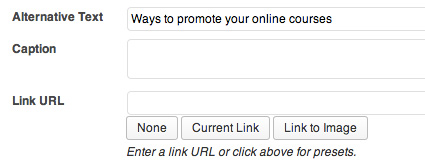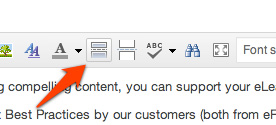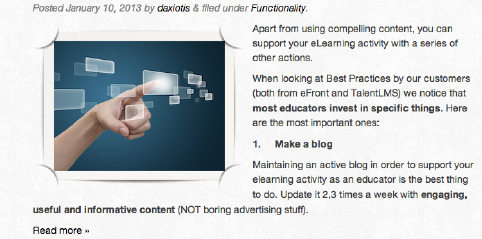Writing is an amazing experience and no matter what form your prefer most you should do it! But when it comes to blogging or web content in general we must always have an issue in mind – and that’s traffic.
No matter if we need the traffic in order to sell our product/services, display ads, or as confirmation that people actually like our writing, traffic plays an important role in all of it. It would be amazing if we could write whatever came to our minds and just had the same effects in traffic but unfortunately that’s not the case. This is a small guide on how to write for search engine optimization.
Before we begin, let me clearly state that there will be no content alterations or making things prettier for the search engines and “ugly” for our visitors. Our number one goal should be to offer our visitors quality content and at the same time please the search engines too! 🙂
Post Titles Optimization
Unfortunately, titles are one of the hardest parts to get right but need to be analyzed first. This happens because the title is the most essential part of how the search engines will “view” our content and rank it.
Changing a word in your post’s title, can dramatically help you or drop your rank and that’s why it is an important part of the “ranking equation”.
When you begin thinking about a post’s title, you shouldn’t select the most competitive keywords as your main keywords. Those keywords will only bring you traffic if they are close to the first page of Google and by the time it will take you to reach that, you will have lost all the thousands of visitors that could have found you and link to you as a worthy source, from a less competitive keyword. Most of the times the use of “long tail keywords” (will explain in a bit) can work like magic until you have enough domain power to try and rank for more competitive keywords.
Let’s give an example on keyword selection:
While I was researching for a keyword about a post, my first bet was to name the post, “can I make money from my blog?“. This phrase has a great amount of searches (from keyword planner) per month and seemed great, but the problem was that the competition is huge. What I did with my keyword discovery tool, was to change it to “Can I make money off my blog?” and go with that. While the amount of people searching for that was much less (three times less in fact), 157.000 pages mentioned the “can I make money from my blog” but only 559 competitors for the “off my blog” version!
This helped me rank much faster for the “off my blog” term and still have hopes that with more links from other websites one day I’d be able to rank even higher for the “better term”. The difference is that I’m getting traffic from day one, while waiting. Google’s Keyword Tool is a great way to start analyzing keywords but unfortunately, it’s not enough. After using it for two years, I can guarantee that when it comes to keyword research, Market Samurai is the best choice, with the second being far, far superior in terms of how much it helps your research. Whether you decide that market samurai is good for you or not, do me a favor and watch ALL their video tutorials, you will find so many hidden “gems” in them that you won’t believe it!
One more trick to pay attention to when selecting a title for your post is to try and include as many keywords as possible.
For example:
We changed an article in the Talent Blog to test-drive what the changes will do to a post. We edited: 8 Ways to promote your online courses post.
In this title, we have added many different keywords that we can hope to rank for.
- 8 Ways to promote your online courses (ok I admit, no-one will search this exact term but…)
- Ways to promote your online courses: a good long tail keyword that we can hopefully rank easily for and be able to get some traffic from the beginning
- promote your online courses: still a long tail keyword but from this point forward, we’re starting to look into bigger traffic keywords
- promote online courses: Strong keyword!
- Online Courses: Wishful thinking but we can still rank for this keyword, even in the distant future
So doing all the changes in the post we had posted, we were able to get the following ranks:
- 8 Ways to promote your online courses : 1st position
- Ways to promote your online courses: 1st position
- promote your online courses: 1st position
- promote online courses: 6th position
- promote courses: 21st position
So, for the long tail keywords we managed to get amazing ranks and at the same time we’re able to start building some links for the difficult keywords too!
Last but not least, every time we get a new link to the post, the blog’s main page or even the Talent’s main page, all the ranks in all the posts we have in the blog will benefit.
Let’s see what else we can do to help our posts rank higher in Google!
Meta Description Optimization
Your meta description is as important as your title and should be treated as such.
While the character count is higher than the title of the page (156 characters) you should fit the reason(s) why someone should pay attention to that page. Keep in mind that the meta description is not visible to the visitor but at the same time people can see it under the title on the Google results for keywords you rank, so try to make the meta description a teaser for someone to click on and read your article. At the same time, you should always include your main keyword in your meta description.
Permalink Optimization
By Permalink, we mean the URL structure of a post and you can directly change it by clicking on it right below the post title in the editor mode of an article.

Never Forget: after your post goes live, you SHOULDN’T change the permalink because all the engines that got the first URL will get “lost” and any backlinks you have gotten in the past will be lost too.
Rule of thumb: editing the permalink before posting is a straight forward task and a fast one too. By default, the permalink is structured exactly as your post’s title but without spaces (and changed into -). For example the 8 Ways to promote your online courses, would be 8-ways-to-promote-your-online-courses.
What we need to do is to just remove all the “stop-words”. Like propositions and things that you’re sure won’t play a role. Just try to make the permalink shorter but still keep the keyword inside the URL. The ideal example of permalink for that post would be: promote-online-courses and if our domain was a brand new one and it was hard for us to rank for anything, change it to ways-promote-online-courses.
Image Optimization
Every post should have at least one image and it should be visible both from the main blog page and article page too. As a best practice, we should add the image on the left side and at the same time don’t make it very big so it can have some text on the right too. Check this post for example.
Furthermore, we should always add an alt text for the image and as a rule of thumb the description should be the title we’re going to use for the whole article.
Last but not least, we shouldn’t add a link URL to the image because it might confuse our readers (just select none)

Bold Elements
Bold should be used within your posts only to help the viewers scan your article faster to see if it’s of any interest for them. We shouldn’t use bold just for highlighting our main keywords. Even though it helps in our SEO efforts a bit, we’re losing much more by not making our readers able to understand within seconds what our whole article is about. In the long run, having proper bold usage will help us.
More tag
More tag is very useful when it comes to duplicated content. If we don’t use it, we will end up with the same content (on the main blog page (1), category page (2) and the actual post (3) ) three times. Google penalizes duplicated content, even if it comes from our own domain.

As a best practice we should add the ‘add more’ tag after the text on the right of our first image covers it.

It’s always best to use the ‘read more’ tag before we say something important, enticing the visitor to click on the read more link. 😉
Post Length
Google loves lengthy posts and the same applies to our visitors too. I’m not implying that you should write the same things again and again just to fill a “wordcount goal” but if you have a lot of things to analyze about a subject, please do it! Both Google and your readers will appreciate it. 😉
So that’s it, more to come from me really soon and please feel free to ask me any questions you want!
Technical Stuff (Important too!)
- Your Post titles should be made into H1 automatically by your theme (ask your programmer to do that).
- Check if you display your tags below your posts and you have some sort of tag cloud.
- Don’t forget to promote more, the posts that already do well on your blog whether they have many comments, visits or even organic ranks in Google. If you are using WordPress, there’s no better way to promote your best content in your widgets than PostSkin.
- You should claim Google Authorship of your posts no matter if they are on your own blog or other domains as guest-posts. It’s not a very easy process but as the time passes, you’ll be glad you did it. Don’t forget that your photo will appear in Google’s search results when a post you have created appears. This will increase the click-through rate drastically. Look at the example below on a listing for my domain in Google.

This post was a lengthy one and took me quite some time to write. The good part though is that it will certainly help you rank better and keep doing what you love, without making sacrifices in traffic at the same time. Till next time,
Angel
About the author: Angelos Papaioannidis is enjoying life as a freelancer and entrepreneur and at the same time trying to help other people understand the concepts around Internet Marketing and how they can apply the methods learned into their everyday business life. You can find more about him @ his Internet Marketing Blog called Moneytized.
Check our video for the full breakdown:
